
- •Functions
- •The Concept of a Function
- •Trigonometric Functions
- •Inverse Trigonometric Functions
- •Logarithmic, Exponential and Hyperbolic Functions
- •Limits and Continuity
- •Introductory Examples
- •Continuity Examples
- •Linear Function Approximations
- •Limits and Sequences
- •Properties of Continuous Functions
- •The Derivative
- •The Chain Rule
- •Higher Order Derivatives
- •Mathematical Applications
- •Antidifferentiation
- •Linear Second Order Homogeneous Differential Equations
- •Linear Non-Homogeneous Second Order Differential Equations
- •Area Approximation
- •Integration by Substitution
- •Integration by Parts
- •Logarithmic, Exponential and Hyperbolic Functions
- •The Riemann Integral
- •Volumes of Revolution
- •Arc Length and Surface Area
- •Techniques of Integration
- •Integration by formulae
- •Integration by Substitution
- •Integration by Parts
- •Trigonometric Integrals
- •Trigonometric Substitutions
- •Integration by Partial Fractions
- •Fractional Power Substitutions
- •Numerical Integration
- •Integrals over Unbounded Intervals
- •Discontinuities at End Points
- •Improper Integrals
- •Sequences
- •Monotone Sequences
- •Infinite Series
- •Series with Positive Terms
- •Alternating Series
- •Power Series
- •Taylor Polynomials and Series
- •Applications
- •Parabola
- •Ellipse
- •Hyperbola
- •Polar Coordinates
- •Graphs in Polar Coordinates
- •Areas in Polar Coordinates
- •Parametric Equations
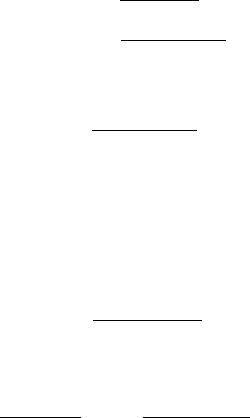
Chapter 3
Di erentiation
In Definition 2.2.2, we defined the slope function of a function f at c by
slope(f(x), c) = lim |
f(x) − f(c) |
|
|
x − c |
|||
x→c |
|||
= lim |
f(c + h) − f(c) |
. |
|
h→0 |
h |
||
The slope (f(x), c) is called the derivative of f at c and is denoted f0(c). Thus,
f0(c) = lim f(c + h) − f(c).
h→0 h
Link to another file.
3.1The Derivative
Definition 3.1.1 Let f be defined on a closed interval [a, b] and a < x < b. Then the derivative of f at x, denoted f0(x), is defined by
f0(x) = lim f(x + h) − f(x)
h→0 h
whenever the limit exists. When f0(x) exists, we say that f is di erentiable at x. At the end points a and b, we define one-sided derivatives as follows:
(i) f0(a+) = lim |
f(x) − f(a) |
= |
lim |
f(a + h) − f(a) |
. |
x→a+ |
x − a |
|
h→0+ |
h |
|
99
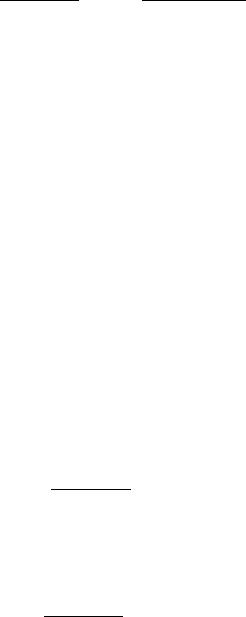
100 |
|
|
|
CHAPTER 3. DIFFERENTIATION |
||
We call f0 |
(a+) the right-hand derivative of f at a. |
|||||
(ii) f0(b−) = lim |
f(x) − f(b) |
= |
lim |
f(b + h) − f(b) |
. |
|
We call f0 |
x→b− |
x − b |
h→0− |
h |
||
(b) the left-hand derivative of f at b. |
||||||
Example 3.1.1 In Example 28 of Section 2.2, we proved that if f(x) = sin x, then f0(c) = slope (sin x, c) = cos c. Thus, f0(x) = cos x if f(x) = sin x.
Example 3.1.2 In Example 29 of Section 2.2, we proved that if f(x) = cos x, then f0(c) = − sin c. Thus, f0(x) = − sin x if f(x) = cos x.
Example 3.1.3 In Example 30 of Section 2.2, we proved that if f(x) = xn for a natural number n, then f0(c) = ncn−1. Thus f0(x) = nxn−1, when f(x) = xn, for any natural number n.
In order to find derivatives of functions obtained from the basic elementary functions using the operations of addition, subtraction, multiplication and division, we state and prove the following theorem.
Theorem 3.1.1 If f is di erentiable at c, then f is continuous at c. The converse is false.
Proof. Suppose that f is di erentiable at c. Then |
|
|
|
||||||||||||||
|
|
lim |
f(x) − f(c) |
= f0(c) |
|
|
|
||||||||||
|
|
x→c |
|
x − c |
|
|
|
|
|
|
|
|
|
|
|||
and f0(c) is a real number. So, |
|
|
− c |
|
|
|
|
|
|
|
|
|
|||||
x→c |
x→c |
|
|
x |
|
|
|
|
− |
|
|||||||
lim f(x) = lim |
|
f(x) |
f(c) |
|
|
(x |
|
|
c) + f(c) |
|
|||||||
|
|
|
− |
|
|
|
|
|
|
|
|||||||
|
|
|
|
|
|
|
|
|
|
|
|
|
|
|
|
|
|
|
= lim |
f(x) − f(c) |
|
lim(x |
|
|
c) + f(c) |
|
|||||||||
|
x |
→ |
0 |
|
x |
− |
c |
· x |
→ |
c |
|
− |
|
|
|
||
|
|
|
|
|
|
|
|
|
|||||||||
=f0(c) · 0 + f(c)
=f(c).
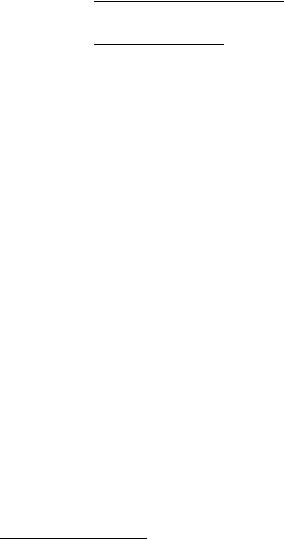
3.1. THE DERIVATIVE |
101 |
Therefore, if f is di erentiable at c, then f is continuous at c.
To prove that the converse is false we consider the function f(x) = |x|.
This function is continuous at x = 0. But |
|
|
|
|
|||||||||||
( ) = h→0 |
| |
h| − | | |
|
|
|
||||||||||
f0 x |
lim |
|
|
|
|
x + h |
|
|
x |
|
|
|
|
||
|
(|x + h| − |x|)(|x + h| + |x|) |
||||||||||||||
= lim |
|
||||||||||||||
|
h→0 |
|
|
|
|
|
| |
|
|
| |
|
| | |
) |
||
|
|
|
|
|
h( x + h + x |
||||||||||
= lim |
|
x2 + 2xh + h2 − x2 |
|
||||||||||||
|
h→0 |
|
|
|
h( x + h + |
x |
) |
|
|||||||
|
|
|
|
|
|
|
|
| |
|
| |
| |
| |
|
|
|
= lim |
|
|
|
2x + h |
|
|
|
|
|
|
|||||
| |
x + h |
x |
| |
|
|
|
|
|
|||||||
|
h→0 |
|
|
|
|
|
|||||||||
= |
|
x |
|
|
| |
| |
|
|
|
|
|
||||
|
|
|
|
|
|
|
|
|
|
|
|
|
|||
|
|
|
|
|
|
|
|
|
|
|
|
|
|
|
|
|
|x| |
|
|
|
|
|
|
|
|
|
|
|
|
||
|
|
1 |
|
|
|
for x > 0 |
|
|
|
|
|||||
|
|
|
|
|
|
|
|
|
|
|
|
|
|
||
= |
|
|
|
|
|
|
|
|
|
|
|
|
|
||
|
|
−1 |
|
|
for x < 0 |
|
|
|
|
||||||
undefined for x = 0.
Thus, |x| is continuous at 0 but not di erentiable at 0. This completes the proof of Theorem 3.1.1.
Theorem 3.1.2 Suppose that functions f and g are defined on some open interval (a, b) and f0(x) and g0(x) exist at each point x in (a, b). Then
(i) |
(f + g)0(x) = f0(x) + g0(x) |
|
(The Sum Rule) |
|||||
(ii) |
(f − g)0(x) = f0(x) − g0(x) |
|
(The Di erence Rule) |
|||||
(iii) |
(kf)0(x) = kf0(x), for each constant k. |
(The Multiple Rule) |
||||||
(iv) |
(f · g)0(x) = f0(x) · g(x) + f(x) · g0(x) |
(The Product Rule) |
||||||
(v) |
|
f |
|
0 |
(x) = |
g(x)f0(x) − f(x)g0(x) |
, if g(x) = 0. |
(The Quotient Rule) |
g |
|
(g(x))2 |
||||||
|
|
|
6 |
|
||||
Proof.
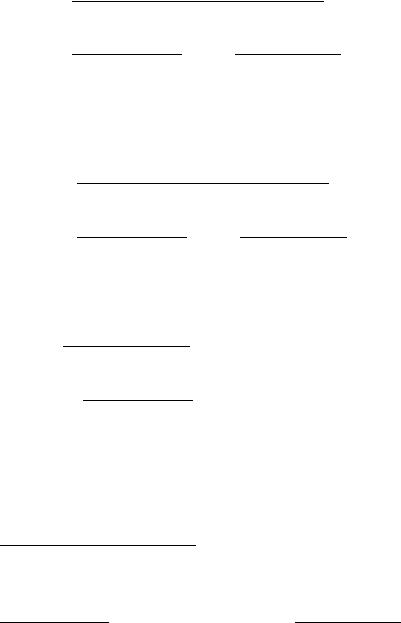
|
CHAPTER 3. DIFFERENTIATION |
|||
(f + g)0(x) = lim |
[f(x + h) + g(x + h)] − [f(x) + g(x)] |
|||
h→0 |
|
h |
|
|
= lim |
f(x + h) − f(x) |
+ lim |
g(x + h) − g(x) |
|
h |
h |
|||
h→0 |
h→0 |
|||
= f0(x) + g0(x).
(f |
− |
g)0(x) = lim |
[f(x + h) − g(x + h)] − [f(x) − g(x)] |
||||
|
h |
→ |
0 |
|
h |
|
|
|
|
|
|
|
|
|
|
|
|
= lim |
f(x + h) − f(x) |
lim |
g(x + h) − g(x) |
||
|
|
h→0 |
h |
− h→0 |
h |
||
|
|
= f0(x) − g0(x). |
|
|
|||
(kf)0(x) = lim |
kf(x + h) − kf(x) |
|||||
h→0 |
|
|
h |
|||
= k |
· |
lim |
f(x + h) − f(x) |
|||
h |
||||||
|
h |
→ |
0 |
|||
|
|
|
|
|
||
= kf0(x).
(f |
· |
g)0(x) = lim |
|
f(x + h)g(x + h) − f(x)g(x) |
|
|
|
|
|
|
||||||||||||
|
h |
→ |
0 |
|
|
|
|
h |
|
|
|
|
|
|
|
|
|
|
|
|
|
|
|
|
|
|
|
1 |
|
|
|
|
|
|
|
|
|
|
|
|
|
|
|
|
|
|
|
lim |
|
f x |
h |
f x |
|
g x |
h |
f x |
g x |
+ |
h |
g x |
||||||||
|
|
|
h |
|
||||||||||||||||||
|
|
= h |
→ |
0 |
|
[( ( + |
) − |
|
( |
)) |
( + |
) + |
( |
)( ( |
|
) − |
( ))] |
|||||
|
|
|
|
|
f(x + h) − f(x) |
|
|
|
|
|
|
|
|
|
|
g(x + h) − g(x) |
||||||
|
|
= lim |
|
· |
lim |
g(x + h) + f(x) lim |
||||||||||||||||
|
|
h |
→ |
0 |
|
|
|
h |
|
|
h |
→ |
0 |
|
|
|
h |
→ |
0 |
|
h |
|
|
|
|
|
|
|
|
|
|
|
|
|
|
|
|
|
|
|
|
|
|||
= f0(x)g(x) + f(x)g0(x).
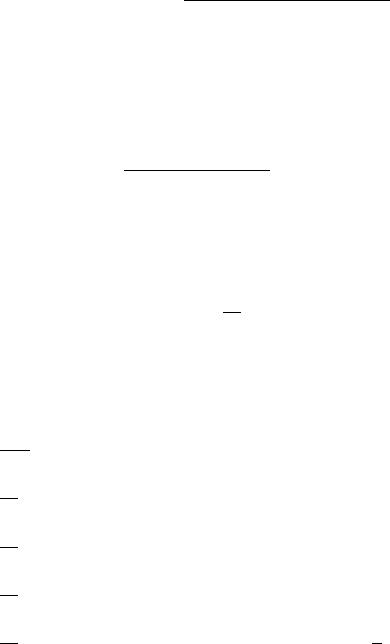
3.1. THE DERIVATIVE |
|
|
|
|
|
|
|
|
|
|
|
|
|
103 |
|
|
||||||
Part (v) |
|
f |
|
0 |
) = h→0 |
1 f(x + h) |
f(x) |
|
|
|
|
|
|
|
|
|||||||
g |
( |
h |
g(x + h) |
− g(x) |
|
|
|
|
|
|
|
|||||||||||
|
|
|
|
x |
lim |
|
|
|
|
|
|
|
|
|
|
|
|
|
|
|
|
|
|
|
|
|
h |
|
|
|
g·(x + h)g(x) |
|
|
|
|
|
|||||||||
|
|
|
|
|
h→0 |
|
|
|
|
|
|
|||||||||||
|
|
|
|
|
= lim |
1 |
|
|
f(x + h) g(x) − g(x + h)f(x) |
|
|
|
|
|
||||||||
|
|
|
|
|
|
|
|
|
|
|
|
|
|
|||||||||
|
|
|
|
|
= (g(x))2 |
h→0 |
|
|
h − |
|
( ) − |
( ) |
h − |
|
||||||||
|
|
|
|
|
1 |
|
|
lim |
(f(x + h) |
|
f(x)) |
g x |
f x |
(g(x + h) |
g(x)) |
|||||||
|
|
|
|
|
1 |
|
|
|
|
|
|
|
|
|
|
|
||||||
|
|
|
|
|
|
|
· [f0(x)g(x) − f(x)g0(x)] |
|
|
|
|
|
|
|||||||||
|
|
|
|
|
= |
|
|
|
|
|
|
|
||||||||||
|
|
|
|
|
(g(x))2 |
|
|
|
|
|
|
|||||||||||
= g(x)f0(x) − g(x)g0(x) , if g(x) 6= 0. (g(x))2
To emphasize the fact that the derivatives are taken with respect to the independent variable x, we use the following notation, as is customary:
f0(x) = dxd (f(x)).
Based on Theorem 3.1.2 and the definition of the derivative, we get the following theorem.
Theorem 3.1.3
(i)ddx(k) = 0, where k is a real constant.
(ii)dxd (xn) = nxn−1, for each real number x and natural number n.
(iii)dxd (sin x) = cos x, for all real numbers (radian measure) x.
(iv)dxd (cos x) = − sin x, for all real numbers (radian measure) x.
(v)dxd (tan x) = sec2 x, for all real numbers x 6= (2n + 1) π2 , n = integer.
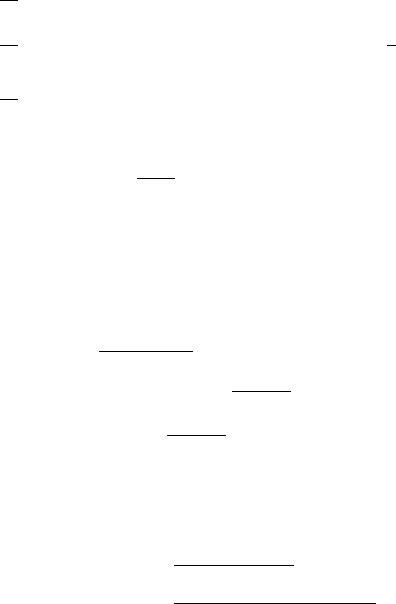
104 |
CHAPTER 3. DIFFERENTIATION |
(vi)dxd (cot x) = − csc2 x, for all real numbers x 6= nπ, n = integer.
(vii)dxd (sec x) = sec x tan x, for all real numbers x 6= (2n+1)π2 , n = integer.
(viii)dxd (csc x) = − csc x cot x, for all real numbers x 6= nπ, n = integer.
Proof. |
|
|
|
|
|
|
|
|
|
|
|
|
|
|
|
|
|
|
|
|
|
|
|
|
|
|
|
|
|
||
Part(i) |
d(k) |
(k) = lim |
k − k |
|
|
|
|
|
|
|
|
|
|
|
|
|
|
|
|
|
|
||||||||||
|
|
|
|
|
|
|
|
|
|
|
|
|
|
|
|
|
|
|
|
||||||||||||
|
|
|
dx |
|
h→0 |
|
h |
|
|
|
|
|
|
|
|
|
|
|
|
|
|
|
|
|
|
|
|||||
|
|
|
|
|
|
= lim |
0 |
|
|
|
|
|
|
|
|
|
|
|
|
|
|
|
|
|
|
|
|
||||
|
|
|
|
|
h |
|
|
|
|
|
|
|
|
|
|
|
|
|
|
|
|
|
|
|
|||||||
|
|
|
|
|
|
|
|
h→0 |
|
|
|
|
|
|
|
|
|
|
|
|
|
|
|
|
|
|
|
||||
|
|
|
= 0. |
|
|
|
|
|
|
|
|
|
|
|
|
|
|
|
|
|
|
|
|
|
|
||||||
Part (ii) For each natural n, we get |
|
|
|
|
|
|
|
|
|
|
|
|
|
|
|
||||||||||||||||
|
d |
(xn) = lim |
|
(x + h)n − xn |
|
|
|
|
(Binomial Expansion) |
|
|
|
|||||||||||||||||||
|
|
|
|
|
|
|
|
|
|||||||||||||||||||||||
|
dx |
|
|
h→0 |
|
1 |
|
|
h |
|
|
|
|
|
|
n(n − 1) |
|
|
|
|
|
|
|
|
|
||||||
|
|
|
= lim |
|
xn + nxn−1h + |
|
xn−2h2 + |
· · · |
+ hn |
− |
xn |
||||||||||||||||||||
|
|
|
|
h |
|
|
|||||||||||||||||||||||||
|
|
|
|
|
h→0 |
|
|
|
|
|
|
|
|
|
|
|
|
2! |
|
|
|
|
|
|
|
|
|||||
|
|
|
= lim |
|
nxn−1 + |
n(n − 1) |
xn−2h + |
· · · |
+ hn−1 |
|
|
|
|
||||||||||||||||||
|
|
|
|
|
h→0 |
|
|
|
|
2! |
|
|
|
|
|
|
|
|
|
|
|
|
|
||||||||
|
|
|
= nxn−1. |
|
|
|
|
|
|
|
|
|
|
|
|
|
|
|
|
|
|
|
|
|
|
||||||
Part (iii) By definition, we get |
|
|
|
|
|
|
|
|
|
|
|
|
|
|
|
|
|||||||||||||||
|
|
|
|
d |
(sin x) = lim |
|
sin(x + h) − sin x |
|
|
|
|
|
|
|
|
||||||||||||||||
|
|
|
|
|
|
|
|
|
|
|
|
|
|
|
|||||||||||||||||
|
|
|
|
dx |
|
|
|
|
h→0 |
|
|
|
|
|
h |
|
|
|
|
|
|
|
|
|
|
|
|||||
|
|
|
|
|
|
|
|
|
|
= lim |
|
sin x cos h + cos x sin h − sin x |
|
|
|
||||||||||||||||
|
|
|
|
|
|
|
|
|
|
|
h→0 |
|
|
|
|
sin h |
|
h |
|
|
1 |
cos h |
|
|
|
||||||
|
|
|
|
|
|
|
|
|
|
|
lim |
|
|
|
x |
|
sin x |
|
|
|
|||||||||||
|
|
|
|
|
|
|
|
|
|
|
cos |
|
h |
|
− |
|
|
−h |
|
|
|
|
|||||||||
|
|
|
|
|
|
|
|
|
|
= h→0 |
|
|
|
|
|
|
|
|
|||||||||||||
=cos x · 1 − sin x · 0
=cos x
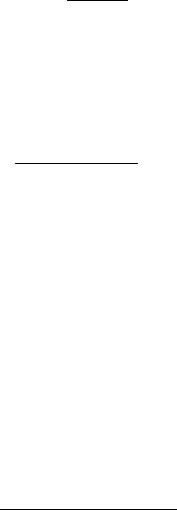
3.1. THE DERIVATIVE |
|
|
|
105 |
|||
since |
|
|
|
|
|
|
|
lim |
sin h |
= 1, |
lim |
1 − cos h |
= 0. (Why?) |
||
h |
|
h |
|||||
h→0 |
|
h→0 |
|
||||
Part (iv) By definition, we get |
|
|
|
|
|
|
|
|
|
|
|
|
|
|
|
|
|||||||||
|
d |
|
(cos x) = lim |
|
cos(x + h) − cos x |
|
|
|
|
|
|
|
|
|
|||||||||||
|
dx |
|
|
|
|
|
|
|
|
|
|
|
|||||||||||||
|
h→0 |
|
1 |
|
|
|
h |
|
|
|
|
|
|
|
|
|
|
|
|
|
|||||
|
|
|
lim |
|
|
x |
|
|
h |
− sin |
x |
|
|
h |
− cos |
x |
|
|
|||||||
|
|
|
= h |
→ |
0 |
|
h |
[cos |
|
cos |
|
|
sin |
|
|
] |
|||||||||
|
|
|
|
|
− sin |
|
· |
|
h |
|
− |
|
|
|
|
|
−h |
|
|
|
|||||
|
|
|
= h→0 |
|
|
|
|
|
|
|
|
|
|||||||||||||
|
|
|
lim |
|
|
|
|
x |
|
sin h |
|
cos x |
|
1 |
cos h |
||||||||||
|
|
|
|
|
|
|
|
|
|
|
|
|
|
|
|
|
|
||||||||
|
|
|
= − sin x · 1 − cos x · 0 |
|
|
|
|
|
(Why?) |
|
|
||||||||||||||
|
|
|
= − sin x. |
|
|
|
|
|
|
|
|
|
|
|
|
|
|
|
|
||||||
Part (v) Using the quotient rule and parts (iii) and (iv), we get
|
|
|
|
|
|
|
|
d |
(tan x) = |
d |
|
sin x |
|
|
|
dx |
dx cos x |
|
|
||||
|
|
|
|||||
|
= |
cos x(sin x)0 − sin x(cos x)0 |
|||||
|
|
|
|
(cos x)2 |
|
|
|
|
= |
cos2 x + sin2 x |
|
|
|
||
|
|
|
|
|
|||
|
|
|
cos2 x |
|
|
||
|
1 |
|
|
|
|
||
|
= |
|
(Why?) |
|
|
||
|
cos2 x |
π |
|
||||
|
= sec2 x, |
x 6= (2n + 1) |
, n = integer. |
||||
|
|
||||||
|
2 |
||||||
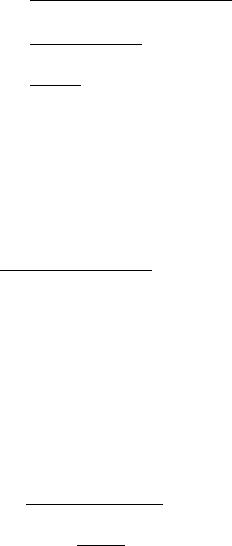
106 |
|
|
|
|
|
|
|
CHAPTER 3. |
DIFFERENTIATION |
|
Part (vi) Using the quotient rule and Parts (iii) and (iv), we get |
||||||||||
|
d |
(cot x) = |
d |
|
cos x |
|
|
|||
|
|
|
|
|
|
|
|
|||
|
dx |
dx |
sin x |
|
||||||
|
|
|
= |
(sin x)(cos x)0 − (cos x)(sin x)0 |
||||||
|
|
|
|
|
|
|
|
|
(sin x)2 |
|
|
|
|
= |
− sin2 x − cos2 x |
(Why?) |
|||||
|
|
|
|
|
|
(sin x)2 |
|
|||
|
|
|
= |
−1 |
|
(why?) |
|
|||
|
|
|
(sin x)2 |
|
||||||
|
|
|
|
|
|
|||||
|
|
|
= − csc2 x, |
x 6= nπ, n = |
integer. |
|||||
Part (vii) Using the quotient rule and Parts (iii) and (iv), we get
d |
|
(sec x) = |
d |
|
|
1 |
|
|
|
|
||
dx |
dx |
|
cos x |
|
|
|
||||||
|
|
|
|
|
|
|||||||
|
|
= |
|
(cos x) · 0 − 1 · (cos x)0 |
|
|
||||||
|
|
|
(cos x)2 |
|
|
|||||||
|
|
|
|
|
|
|
|
|
|
|||
|
|
1 |
· |
sin x |
|
|
|
|||||
|
|
= |
|
|
(Why?) |
|||||||
|
|
cos x |
cos x |
|||||||||
|
|
= sec x tan x, |
x 6= (2n + 1) |
π |
, n = integer. |
|||||||
|
|
2 |
||||||||||
Part (viii) Using the quotient rule and Parts (iii) and (iv), we get
d |
|
|
|
|
|
|
|
|
dx |
(csc x) = |
dx |
sin x |
|
||||
|
|
|||||||
|
|
= |
sin x · 0 − 1 · (sin x)0 |
|
||||
|
|
|
|
|
|
(sin x)2 |
|
|
|
|
= |
1 |
|
− cos x |
(Why?) |
||
|
|
sin x |
· sin x |
|||||
|
|
|
|
|||||
= − csc x cot x, x 6= nπ, n = integer.
This concludes the proof of Theorem 3.1.3.

3.1. THE DERIVATIVE |
|
|
|
|
|
|
|
|
|
|
|
|
|
|
|
|
107 |
||||||
Example 3.1.4 Compute the following derivatives: |
|
|
|
||||||||||||||||||||
|
d |
|
|
|
|
|
|
d |
|
|
|
|
|
|
|
|
|
||||||
(i) |
|
|
|
(4x3 − 3x2 + 2x + 10) |
(ii) |
|
|
|
|
|
|
(4 sin x − 3 cos x) |
|
|
|
||||||||
dx |
|
dx |
|
|
|
||||||||||||||||||
|
|
d |
|
|
|
|
|
|
|
d |
|
x3 |
+ 1 |
|
|
|
|
||||||
(iii) |
|
|
|
(x sin x + x2 cos x) |
(iv) |
|
|
|
|
|
|
|
|
|
|
|
|
|
|||||
|
dx |
|
|
dx |
x2 |
+ 4 |
|
|
|
||||||||||||||
Part (i) |
Using the sum, di erence and constant multiple rules, we get |
||||||||||||||||||||||
|
|
|
|
|
d |
|
|
d |
|
|
|
d |
d |
|
|||||||||
|
|
|
|
|
(4x3 − 3x2 + 2x + 10) = 4 |
|
(x3) − 3 |
|
(x2) + 2 |
|
|
+ 0 |
|||||||||||
|
|
|
|
dx |
dx |
dx |
dx |
||||||||||||||||
= 12x2 − 6x + 2.
Part (ii) |
d |
(4 sin x − 3 cos x) = 4 |
d |
(sin x) − 3 |
d |
(cos x) |
|||
|
|
|
|
|
|
||||
dx |
dx |
dx |
|||||||
=4 cos x − 3(− sin x)
=4 cos x + 3 sin x.
Part (iii) Using the sum and product rules, we get
d dx
(x sin x + x2 cos x) = |
d |
(x sin x) + |
|
d |
|
(x2 cos x) |
(Sum Rule) |
||||||||
|
|
dx |
|||||||||||||
|
dx |
|
|
|
|
|
|
|
|||||||
= |
d |
sin x + x |
|
d |
(sin x) |
|
|||||||||
|
|
|
|
|
|
||||||||||
dx |
|
dx |
|
||||||||||||
|
|
+ |
d |
|
|
|
|
|
d |
(cos x) |
|||||
|
|
|
(x2) cos x + x2 |
|
|
||||||||||
|
|
dx |
dx |
||||||||||||
= 1 · sin x + x cos x + 2x cos x + x2(− sin x) = sin x + 3x cos x − x2 sin x.
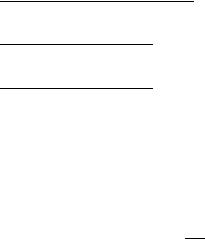
108 |
|
|
|
|
|
|
|
|
|
|
|
CHAPTER 3. |
DIFFERENTIATION |
|||||||||||||||
Part (iv). Using the sum and quotient rules, we get |
|
|
||||||||||||||||||||||||||
|
d |
|
x3 + 1 |
(x2 + 4) |
d |
(x3 + 1) − (x3 + 1) |
d |
(x2 + 4) |
||||||||||||||||||||
|
|
dx |
dx |
|||||||||||||||||||||||||
|
|
|
|
|
|
|
= |
|
|
|
|
|
|
|
|
|
|
|
|
|
|
|
|
|
(Why?) |
|||
|
dx |
x2 + 4 |
|
|
|
(x2 + 4)2 |
|
|
|
|
|
|||||||||||||||||
|
|
|
|
= |
(x2 + 4)(3x2) − (x3 + 1) = x |
|
|
|
(Why?) |
|||||||||||||||||||
|
|
|
|
|
|
|
|
|
|
(x2 + 4)2 |
|
|
|
|
|
|
|
|
|
|
|
|||||||
|
|
|
|
= |
3x4 + 12x2 − 2x3 − 2x |
|
|
|
|
|
|
|
(Why?) |
|||||||||||||||
|
|
|
|
|
|
|
|
|
(x2 + 4)2 |
|
|
|
|
|
|
|
|
|
|
|
|
|
|
|
||||
|
|
|
|
= |
3x4 − 2x3 + 12x2 − 2x |
. |
|
|
|
|
|
|
|
|||||||||||||||
|
|
|
|
|
|
|
|
|
(x2 + 4)2 |
|
|
|
|
|
|
|
|
|
|
|
|
|
|
|
||||
Exercises 3.1 |
|
|
|
|
|
|
|
|
|
|
|
|
|
|
|
|
|
|
|
|
||||||||
1. |
From the definition, prove that |
d |
|
(x3) = 3x2. |
|
|
||||||||||||||||||||||
dx |
|
|
||||||||||||||||||||||||||
|
|
|
|
|
|
|
|
|
|
|
|
|
x |
|
|
|
|
|
|
|||||||||
|
|
|
|
|
|
|
|
|
|
|
|
dx |
|
x2 |
|
|
||||||||||||
2. |
From the definition, prove that |
d |
|
|
|
|
1 |
|
|
= |
−1 |
. |
|
|
||||||||||||||
|
|
|
|
|
|
|
|
|
|
|
|
|
|
|||||||||||||||
Compute the following derivatives: |
|
|
|
|
|
|
|
|
|
|
|
|
|
|
|
|
|
|||||||||||
3. |
d |
(x5 − 4x2 + 7x − 2) |
4. |
|
d |
(4 sin x + 2 cos x − 3 tan x) |
||||||||||||||||||||||
|
|
|
|
|
|
|
|
|||||||||||||||||||||
dx |
|
dx |
||||||||||||||||||||||||||
|
d |
|
|
2x + 1 |
|
|
|
|
|
d |
|
|
|
|
x4 + 2 |
|
|
|||||||||||
5. |
|
|
|
|
|
|
|
6. |
|
|
|
|
|
|
|
|
|
|
||||||||||
dx |
x2 + 1 |
|
|
dx |
3x + 1 |
|
|
|||||||||||||||||||||
7. |
d |
(3x sin x + 4x2 cos x) |
8. |
|
d |
(4 tan x − 3 sec x) |
||||||||||||||||||||||
|
|
|
|
|
|
|||||||||||||||||||||||
dx |
|
dx |
||||||||||||||||||||||||||
9. |
d |
|
(3 cot x + 5 csc x) |
10. |
|
|
d |
|
|
(x2 tan x + x cot x) |
||||||||||||||||||
dx |
|
|
|
|
|
|
|
|||||||||||||||||||||
|
|
|
|
|
|
|
|
|
|
|
|
dx |
|
|
|
|
|
|
|
|||||||||
Recall that the equation of the line tangent to the graph of f at (c, f(c)) has slope f0(c) and equations.
Tangent Line: y − f(c) = f0(c)(x − c)
The normal line has slope −1/f0(c), if f0(c) 6= 0 and has the equation:

3.1. THE DERIVATIVE |
|
|
|
109 |
||||
Normal Line: |
y |
− |
f(c) = |
−1 |
(x |
− |
c). |
|
f0(c) |
||||||||
|
|
|
|
|
||||
In each of the following, find the equation of the tangent line and the equation of the normal line for the graph of f at the given c.
11. |
f(x) = x3 + 4x − 12, c = 1 |
12. |
f(x) = sin x, c = π/6 |
|
13. |
f(x) = cos x, |
c = π/3 |
14. |
f(x) = tan x, c = π/4 |
15. |
f(x) = cot x, |
c = π/4 |
16. |
f(x) = sec x, c = π/3 |
17. |
f(x) = csc x, c = π/6 |
18. |
f(x) = 3 sin x + 4 cos x, c = 0. |
|
Recall that Newton’s Method solves f(x) = 0 for x by using the fixed point iteration algorithm:
f(xn)
xn+1 = g(xn) = xn − f0(xn) , x0 = given, with the stopping rule, for a given natural number n,
|xn+1 − xn| < 10−n.
In each of the following, set up Newton’s Iteration and perform 3 calculations for a given x0.
19.f(x) = 2x − cos x , x0 = 0.5
20.f(x) = x3 + 2x + 1 , x0 = −0.5
21.f(x) = x3 + 3x2 − 1 = 0, x0 = 0.5
22.Suppose that f0(c) exists. Compute each of the following limits in terms of f0(c)
(a) |
lim |
f(x) − f(c) |
|
x − c |
|||
|
x→c |
||
(c) |
lim |
f(c − h) − f(c) |
|
h |
|||
|
h→0 |
||
(e) |
lim |
f(c + h) − f(c − h) |
|
2h |
|||
|
h→0 |
(b) lim
h→0
(d) lim
t→c
(f) lim
h→0
f(c + h) − f(c) h
f(c) − f(t) t − c
f(c + 2h) − f(c − 2h) h

110 |
|
CHAPTER 3. DIFFERENTIATION |
|
23. Suppose that g is di erentiable at c and |
|
||
(g0 |
(c−) |
if t = c. |
|
|
g(t)−g(c) |
if t 6= c |
|
f(t) = |
t c |
||
Show that f is continuous at c.
Suppose that a business produces and markets x units of a commercial item. Let
C(x) = The total cost of producing x-units.
p(x) = The sale price per item when x-units are on the market.
R(x) = xp(x) = The revenue for selling x-units.
P (x) = R(x) − C(x) = The gross profit for selling x-items.
C0(x) = The marginal cost.
R0(x) = The marginal revenue.
P 0(x) = The marginal profit.
In each of the problems 24–26, use the given functions C(x) and p(x) and compute the revenue, profit, marginal cost, marginal revenue and marginal profit.
24.C(x) = 100x − (0.2)x2, 0 ≤ x ≤ 5000, p(x) = 10 − x
25.C(x) = 5000 + x2 , 1 ≤ x ≤ 5000, p(x) = 20 + x1
26.C(x) = 1000 + 4x − 0.1x2, 1 ≤ x ≤ 2000, p(x) = 10 − x1
In exercises 27–60, compute the derivative of the given function.
27. |
f(x) = 4x3 |
− 2x2 + 3x − 10 |
28. |
f(x) = 2 sin x − 3 cos x + 4 |
||
29. |
f(x) = 3 tan x − 4 sec x |
30. |
f(x) = 2 cot x + 3 csc x |
|||
31. |
f(x) = 2x2 |
+ 4x + 5 |
32. |
f(x) = x2/3 − 4x1/3 + 5 |
||
33. |
f(x) = 3x−4/3 + 3x−2/3 + 10 |
34. |
f(x) = 2√ |
|
+ 4 |
|
x |
||||||
